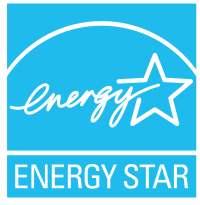Lighting
Light bulbs are the first thing many people think of when it comes to energy efficiency. Generally, a picture of the twisted tubes of a florescent light bulb comes to mind, but there are other ways to save money on lighting. One such method is by using LED light bulbs. These bulbs last up to five times as long as normal CFLs (florescent) and use 20-40% less electricity. The downside to these bulbs is the price tag that comes with them. LED bulbs cost about twice as much as CFLs. However, this upfront cost can be recouped by electricity and replacement costs.

Courtesy of S-Tech
In addition to the cost savings, LED bulbs do not have many of the issues that CFLs suffer from. CFL bulbs contain Mercury and other hazardous substances and must be disposed of differently than most garbage. CFLs also have a delay when turning on and are known to flicker. LEDs do not have any of these problems and can be a much safer, cheaper way to light your house.
But what is the cheapest way to light your house? Use natural light! It’s solar power at its finest, and it does not cost a thing. Never pull down your blinds and turn on a light. It’s just plain wasteful.
Appliances

Courtesy of Wikimedia
The easiest way to save energy and money on appliances has been made easy. Federally regulated ENERGY STAR ratings are given to devices that use 10% – 50% less water and energy than traditional appliances. Many of these certified appliances also come with government incentives to help with the generally larger upfront cost that comes with a more efficient model. Even without any incentives, these appliances will pay for themselves with the added energy efficiency in many cases. According to the HBAGC, appliances with the energy star certification save 30% in energy costs on average, which really adds up over time. One of the best appliances to look at upgrading is your washing machine. Front-loading machines use about 40% less water and 50% less energy than traditional washers. This is estimated to save $75 – $100 per year for a family of four.
Refrigerators and Freezers

Courtesy of Audubon
While refrigerators and freezers are technically appliances, they deserve their own category. Like other appliances, they can get energy star certified if they are at least 10% more efficient than the federal standard. These refrigerators and freezers take advantage of better temperature control, better door sealing, more efficient compressors, and better overall insulation. Like other appliances, spending the extra money to get an efficient refrigerator or freezer can save money in the long run. By replacing a ten-year-old refrigerator with a brand new energy star rated refrigerator can save the owner over $100 per year in electricity.
Insulation

Courtesy of USA Aircare
Heating and cooling account for a large portion of the average homeowners electricity expenditures throughout a year. This makes it imperative to make efficient use of the HVAC system in your house. Generally, the best places to use insulation are the basement and attic which have the largest exposed surface area to the outdoors. Insulation is especially useful because it helps seal in cool air during the summer months as well as keep warm air inside when temperatures drop in the winter. Insulation comes in many different types that can fit almost any part of the house. Energy.gov explains that air sealing is also a very important part of insulating your home. The site states, “any air sealing efforts will complement your insulation efforts, and vice versa.”
High Performance Windows

Courtesy of AngiesList
One of the hardest places to insulate in the home are the windows. Glass is a very poor insulator, but covering the glass with foam insulation completely destroys the aesthetics and function of the windows. To combat this, most windows are now double paned with high performance or low emissivity glass. These double panes are filled with gas and help to provide a layer of insulation between the air indoors and outside. Low emissivity coatings can also be applied to windows, and have become the norm in many areas of the country. Improving window insulation can make a big difference. In a simulation using a Boston home, replacing inefficient windows with low emissivity, double paned glass saves $103 per year.
Improving energy efficiency in the home can be an expensive undertaking. However, improving the efficiency of your appliances and insulating cold walls and windows can save a lot of money in the long run. Sometimes you can earn green simply by going green.